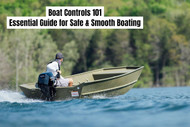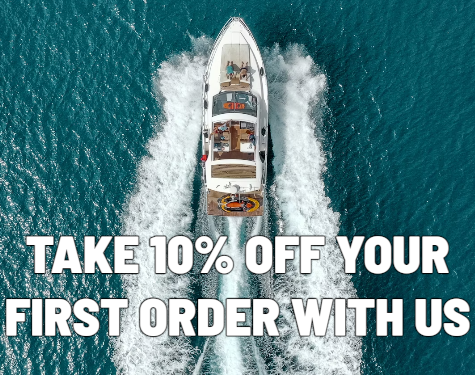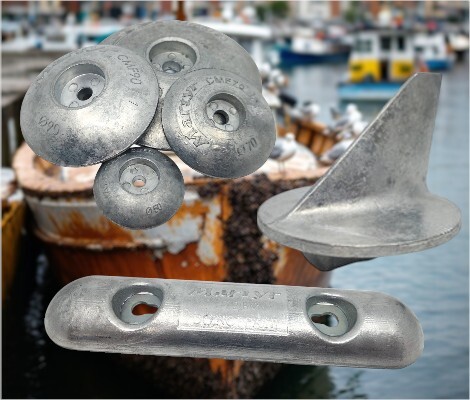Boat Controls 101: Everything You Need to Know
14th Oct 2025
Understanding your boat’s control systems is vital for both safe and efficient navigation. Controls are the interface between the boater and the vessel, allowing you to steer, regulate speed, and manage engine power. Whether you are a beginner feeling your way around the controls for the first time or an experienced boater looking to refresh or upgrade your skills, having a solid grasp of the various control types and components will improve your confidence and the overall boating experience. This guide breaks down the fundamentals of boat controls, exploring the main components and offering practical advice for mastering your vessel’s handling on the water.
What Are Boat Controls?
Boat controls encompass all the mechanisms and devices used to direct, operate, and manage the boat’s movement and engine functions. The core controls include:
- Throttle: Regulates engine speed and power output.
- Steering wheel or tiller: Directs the boat’s heading by turning the rudder or outboard motor.
- Shift levers: Allows shifting between forward, neutral, and reverse gears.
- Electronic or hydraulic systems: Enhance control precision and reduce physical effort by managing steering and throttle input signals to the engine or rudder.
Proper use and consistent maintenance of these controls not only ensure smooth, responsive operation but are essential for preventing accidents, mechanical failures, or costly repairs.
Types of Boat Controls
Mechanical Controls
Mechanical controls are the traditional system found in many smaller or simpler boats. They use physical cables and linkages to connect the throttle and gear shift levers directly to the engine components. When you push or pull the lever or turn the wheel, these mechanical linkages transfer those movements instantly. Mechanical controls are popular for their straightforward design, reliability, and ease of repair. However, they can be prone to stiffness or corrosion over time without regular maintenance.
Hydraulic Controls
Hydraulic systems replace many of the physical cables and linkages with fluid-filled lines, pistons, and pumps to transfer control inputs from the helm to the engine or rudder. Hydraulic controls are particularly effective on larger vessels where increased force is needed to manoeuvre heavy engines or rudders. These systems provide smoother, more responsive steering and shifting, reducing operator fatigue. Saltwater environments especially benefit from hydraulic systems’ resistance to corrosion compared to mechanical cables.
Electronic Controls (Fly-by-Wire)
Fly-by-wire or electronic control systems represent the latest advancement in boat controls. Instead of physical cables, these systems use sensors to detect control movements at the helm. The inputs are then transmitted electronically to actuators that adjust the throttle, shift gears, or steer the boat. This technology enables precision control, faster response times, and integration with digital engine management, diagnostics, and navigation systems. A significant advantage is the reduction in mechanical wear, leading to decreased maintenance and the ability to customise control responses via software updates.
Key Components of Boat Controls
Steering System
The steering system is a fundamental part of your boat’s control mechanism. It includes the helm — which can be a wheel or a tiller — connected by steering cables or hydraulic lines to the rudder or outboard motor. When you turn the helm, it sends a mechanical or hydraulic signal through this system to pivot the rudder or rotate the outboard motor, steering the boat left or right. On larger vessels, hydraulic or electro-hydraulic systems assist in this process, providing smoother steering with less physical effort. Proper steering control ensures safe navigation through tight waterways and rough seas, making it essential to understand and maintain the entire steering system, including cables, hoses, and the rudder itself.
Throttle and Shift Controls
Throttle controls govern the speed of your boat by regulating engine RPMs. The gear shift levers move the propeller between forward, neutral, and reverse, allowing you to control the boat’s direction and stopping capability. Some boats utilise single-lever controls that integrate throttle and gear shifting for ease of use, especially on smaller or simpler vessels. Larger boats often use twin-lever systems, separating the throttle and shifting functions for finer control, which is beneficial when docking or manoeuvring in tight spaces.
Control Cables and Linkages
Control cables and linkages physically connect the control levers to your engine’s throttle and shift mechanisms as well as to the steering components. These parts are crucial for responsive and reliable control but require regular inspection and maintenance. Over time, cables can become corroded, kinked, or stiff, which can lead to delayed responses or control failure. Lubrication and replacement when necessary help maintain smooth operation and prevent hazardous situations on the water.
Engine Control Module (ECM)
The Engine Control Module (ECM) is the electronic brain behind modern engine management. It takes input from throttle and shift controls, sensors, and other systems to optimise engine performance. In boats equipped with fly-by-wire or electronic control systems, the ECM communicates electronically, sending real-time data and diagnostics to the boat’s dashboard, aiding in performance monitoring and troubleshooting. This integration provides precise control and helps maintain fuel efficiency and emissions compliance.
How to Operate Boat Controls Safely
- Always familiarise yourself with your boat’s specific control layout and operation before setting out, even if it’s a vessel you’ve used before.
- Use smooth, gradual movements when operating throttle and steering to prevent sudden shifts that could destabilise the boat or surprise passengers.
- Regularly perform system checks, testing the responsiveness and looking for signs of wear, rust, or corrosion that could impair function.
- Learn emergency procedures for manual steering or engine shutdown in case of control system failure — being prepared is vital for safety on the water.
Maintenance Tips for Boat Controls
- Conduct regular inspections of cables, hydraulic fluid levels, and electronic connectors to catch and fix issues early.
- Clean control mechanisms frequently and protect vulnerable parts with marine-grade lubricants or corrosion inhibitors, especially in saltwater environments.
- Schedule professional servicing of hydraulic and electronic control systems at recommended intervals to maintain optimal performance and reduce risk of failure.
For boating safety guidelines and official recommendations, visit the Australian Maritime Safety Authority (AMSA).
Frequently Asked Questions
What types of boat controls are best for beginners?
Mechanical controls are typically the easiest to understand and maintain, making them ideal for new boaters.
How do electronic controls improve boating experience?
They offer precise and responsive control with integrated diagnostics and reduce the need for physical maintenance.
Can I upgrade from mechanical to hydraulic or electronic controls?
Yes, upgrades are possible, but installation should be done by a qualified marine technician for safety and compatibility.
How often should boat controls be serviced?
Regular inspection each boating season along with professional servicing every 1-2 years is recommended.
What should I do if my steering becomes stiff or unresponsive?
Stop safely and inspect for cable damage, low hydraulic fluid, or electronic malfunctions, then seek prompt repairs.
How do I troubleshoot unresponsive throttle or shift controls?
Check cables or linkages for wear or obstruction, ensure connections are secure, and consult your manual for specific reset procedures.
Can hydraulic steering systems leak? What should I do?
Yes, hydraulic lines can develop leaks; monitor fluid levels and inspect hoses regularly, topping up or repairing as needed to maintain safe steering.
What safety precautions should I take when operating boat controls?
Always operate controls smoothly, avoid sudden movements, maintain situational awareness, and practise emergency procedures including engine shutdown.
What signs indicate it’s time to replace control cables?
Fraying, stiffness, corrosion, or delayed response signal replacement is needed to avoid loss of control.
Can I perform maintenance on electronic control systems myself?
Basic checks like cleaning connectors and visual inspections are possible, but in-depth repairs or diagnostics should be done by professionals.

 Australian Dollars
Australian Dollars


